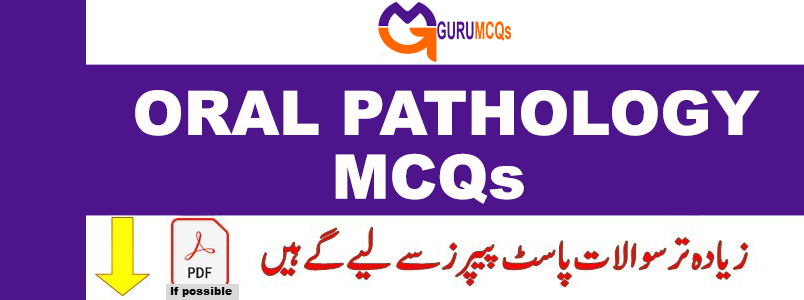
The mouth, being a vital organ with diverse functions, is subject to various diseases falling under the domain of oral pathology. This field encompasses the study of diseases affecting the mouth, jaws, and associated structures like salivary glands, facial muscles, temporomandibular joints, and perioral skin. Oral pathology, as a specialized discipline, focuses on diagnosing and investigating the causes and effects of diseases impacting the oral and maxillofacial region. For a thorough and objective assessment of students’ critical thinking abilities, multiple-choice questions (MCQs) serve as the preferred format. Gurumcqs.com offers a comprehensive collection of 2000+ oral pathology MCQs with answers and detailed explanations. These MCQs are carefully selected from reputable and trusted reference books on oral pathology. They prove beneficial for interview preparation, entrance examinations, competitive exams, and certifications, catering to individuals with varying levels of experience, including both seasoned professionals and newcomers. Additionally, you can explore MCQs on Oral Anatomy on this platform.
151. Which is not true of Ludwig’s angina?
A. Usually arises from an infected molar
B. involves submandibular space
C. May need emergency tracheostomy
D. None of the above
152. Reversible pulpitis change to irreversible pulpitis primarily because of:__________?
A. Vacular strangulation
B. Reduced host resistance
C. Invasion of microorganisms
D. An increase in microbial virulence
153. Pain due to acute irreversible pulpitis is:____________?
A. Spontaneous
B. Sharp- shock like
C. Lasting for short time
D. Continuous
154. A person experiences throbbing pain at night. It is due to:__________?
A. Acute Pulpal degeneration
B. Acute periodontal abscess
C. Chronic pulpitis
D. Cellulitis
155. An asymptomatic tooth has deep has deep caries on occlusal surface. Radiograph shows radiopaque mass at apex of the tooth: this mass is most likely to be:____________?
A. Cementoma
B. Condensing Osteitis
C. Chronic apical periodontitis
D. Acute apical periodontitis
156. Acute osteomyelitis is most frequently caused by which of the following microorganisms?
A. Gonococcus
B. Enterococcus
C. Streptococcus
D. Staphylococcus
157. Which of the following differentiates between condensing osteitis and benign cementoblastoma?
A. Condensing osteitis is associated with vital teeth where as cementoblastoma is associated with non-vital teeth
B. In condensing osteitis radiopacity is attached to tooth where as in cementoblastoma it is not
C. Cementoblastoma is associated with vital tooth where as condensing osteitis is associated with non-vital tooth
158. D. In cementoblastoma radiopacity is attached to tooth where as in condensing osteitis it is not
Constant feature associated with a radicular cyst
A. An impacted tooth
B. A missing both
C. A non-vital tooth
D. An anomalous tooth
159. The caries of enamel surface leads to accentuation of:__________?
A. Incremental lines of retzius
B. Perikymata
C. Imbrication lines of pickerill
D. Wickham’s striae
160. Odontogenic epithelium responsible for the formation of dental cyst is:___________?
A. Cell rests of seirre
B. Enamel organ
C. Reduced enamel epithelium
D. Cell rests of malassez

Pingback: Oral Histology MCQs Questions for Test and Exam Preparation | GURU MCQS
I was recommended this website by my cousin. I’m not sure whether this post is written by him as nobody else
know suc detailed about my difficulty. You are wonderful!
Thanks! https://www.waste-ndc.pro/community/profile/tressa79906983/
I was recommended tthis webnsite by my cousin. I’m not suure whether this post is written by
him as nobody else know such detailed about myy difficulty.
You are wonderful! Thanks! https://www.waste-ndc.pro/community/profile/tressa79906983/